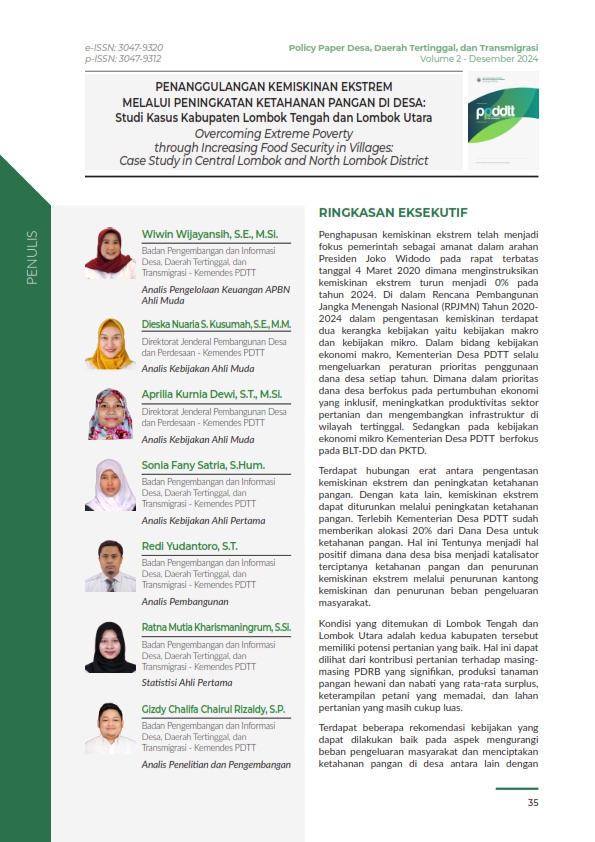Overcoming Extreme Poverty through Increasing Food Security in Villages
Case Study in Central Lombok and North Lombok District
Keywords:
Alleviatio, Central Lombok, Extreme Poverty, Food Security, North Lombok, Village Cash Workforce Program, Village FundAbstract
Eliminating extreme poverty has become the government's focus as a mandate in President Joko Widodo's instruction stated in the limited meeting on March 4 2020, which instructed extreme poverty to fall to 0% by 2024. In the 2020-2024 National Medium Term Development Plan (RPJMN), there are two policy frameworks for poverty alleviation, which are macro policy and micro policy. In the field of macroeconomic policy, the Ministry of Village, Disadvantage Region and Transmigration continuingly issues priority regulations for the use of village funds every year. Where village fund priorities focus on inclusive economic growth, increasing the productivity of the agricultural sector and developing infrastructure in underdeveloped areas. Meanwhile, for the microeconomic policy, the Ministry of Village, Development of Disadvantage Region and Transmigration focuses on Direct Cash Assistance of the Village Funds Program (BLT DD) and Village Cash Workforce Program (PKTD).
There is a close relationship between alleviating extreme poverty and increasing food security. In other words, extreme poverty can be reduced through increasing food security. Moreover, the Ministry of Village, Development of Disadvantage Region and Transmigration has allocated 20% of the village fund for food security. This is certainly a positive thing where village funds can be a catalyst for creating food security and reducing extreme poverty through reducing pockets of poverty and reducing the burden of public expenditure.
The conditions found in Central Lombok and North Lombok are that both regencies have good agricultural potential. This can be seen from the significant contribution of agriculture to each GRDP, the production of animal and vegetable food crops which is on average a surplus, adequate farmer skills, and agricultural land which is still quite large.
There are several policy recommendations that can be implemented both in terms of reducing the burden of community expenditure and creating food security in villages, including by verifying data by name by address for recipients of Direct Village Fund Cash Assistance (BLT-DD), conducting workshops including discussing Village Ministerial Decree No. 82 of 2022 concerning Food Security Guidelines. This discussion could be more focused, including discussing the use of local food plants to strengthen food security in villages and diversify food, and piloting programs for productive yards or shared gardens.
Downloads


